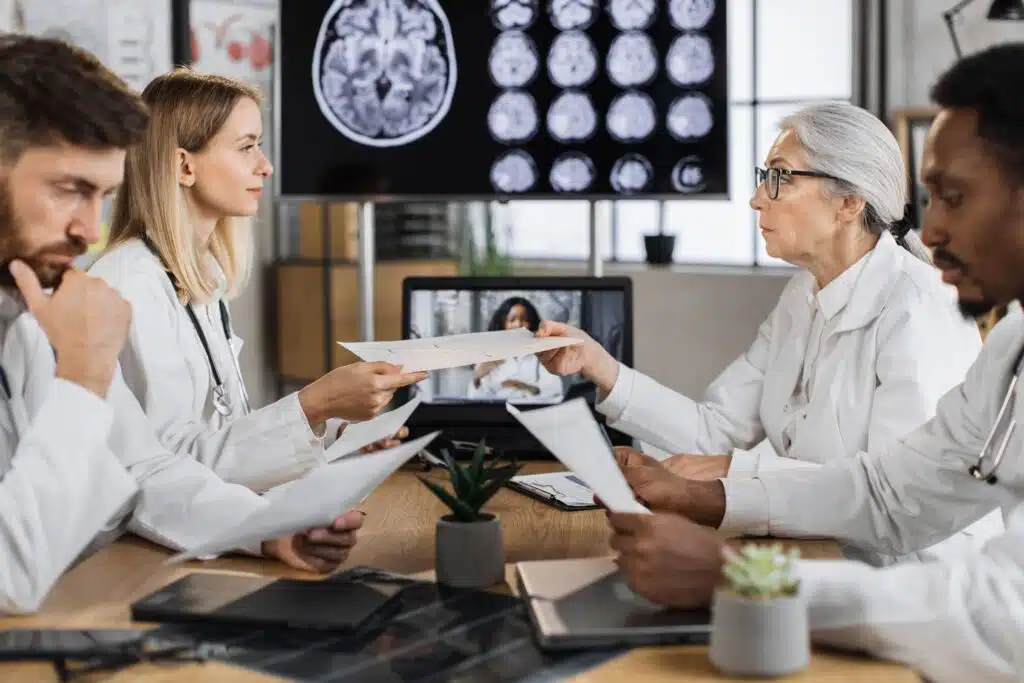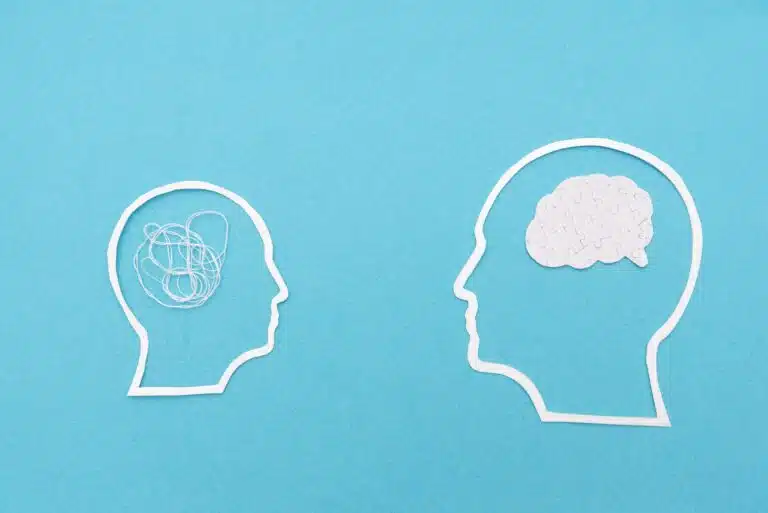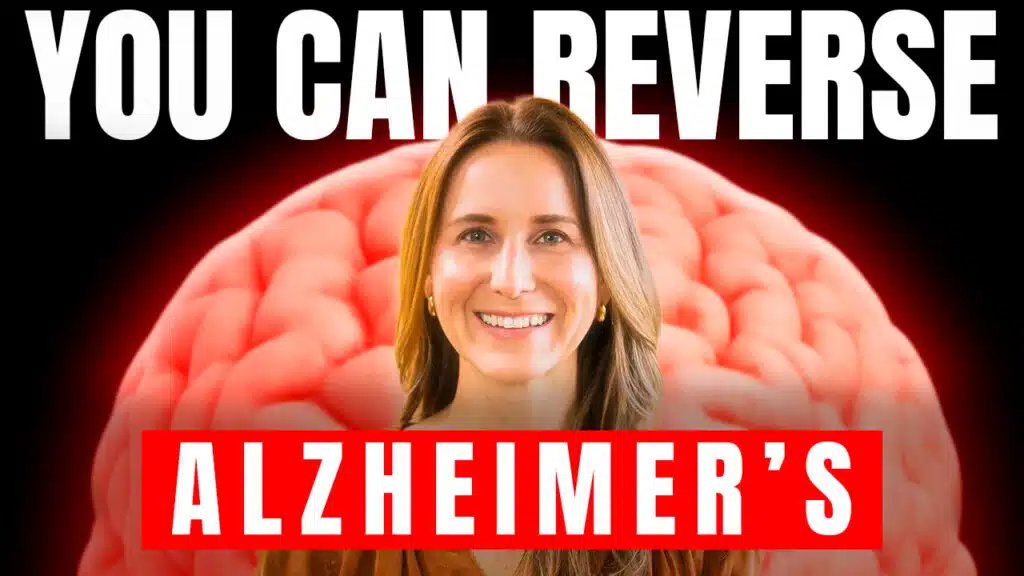The Proven Approach for Reversing Alzheimer's: Your Guide to Prevention, Intervention, and Hope
If you’ve been told that Alzheimer’s is inevitable or irreversible, I need you to hear this: that’s false hopelessness. And according to Dr. Heather Sandison, author of the New York Times bestseller Reversing Alzheimer’s, it’s time we replace that narrative with something backed by clinical evidence… actual hope.
In a recent conversation, Dr. Sandison shared what she’s witnessed firsthand in her practice: patients with a Montreal Cognitive Assessment (MOCA) score of zero completely nonverbal
progressing to having regular conversations again. People in their 90s improving their cognitive function dramatically. Individuals regaining the ability to read, dress themselves, and engage meaningfully with loved ones.
This isn’t about miracle cures or false promises. This is about understanding what’s actually driving cognitive decline and doing something about it.
Understanding the MOCA Test and What the Numbers Mean
The MOCA test is a one-page screening tool you can download online. It’s straightforward: you draw a clock, copy a cube, identify animals, orient yourself in time and place, repeat sentences, do some math. A perfect score is 30. A score of 26 or above is considered normal.
But here’s what those lower numbers mean in real life: someone with a score of five or eight has severe cognitive impairment. They need significant support with daily activities. A score of two? That person might only have “yes” and “no” in their vocabulary.
Dr. Sandison worked with a patient named Darlene who went from a MOCA score of two to seven in just six weeks. That five-point jump might not sound like much on paper, but the transformation was profound. Darlene went from being unable to communicate beyond yes or no to forming complete sentences, expressing when she was hot, cold, or hungry. She regained the ability to use the bathroom independently and dress herself.
And patients scoring in the 20s? Dr. Sandison sees them return to a perfect score of 30 regularly. That’s why early intervention matters so much.

The Earlier You Start, the Better Your Odds
Think of it like cancer treatment. You want to catch it at stage one, not stage four. The same principle applies to cognitive decline.
Dr. Sandison has seen a 95-year-old patient improve his score from eight to 15. But she’s also honest about what increases her confidence in seeing results: the patient needs to want it. They need to be motivated, aware of their decline, and willing to actively participate in the protocol.
There’s a catch-22 here. Sometimes the part of the brain responsible for self-awareness is damaged by the disease process itself. These patients might genuinely not realize they’re forgetting things or that their brain isn’t working the way it used to. Without that awareness, it’s incredibly difficult to generate the internal motivation needed to stick with the program.
Age matters, too. Younger patients tend to have better outcomes. But more importantly, the stage of disease matters most. Generally, if someone’s MOCA score is above 16 or 17, there’s significantly more confidence in seeing meaningful improvement.
Difference between Dementia and Alzheimer's:
Let’s clear this up: dementia is an umbrella term. Alzheimer’s disease is the most common type of dementia, but it’s not the only one.
There’s Frontotemporal dementia (what Bruce Willis is experiencing), Lewy Body dementia (which Robin Williams had), Parkinson’s dementia, and others. Alzheimer’s is most common in women, they represent two-thirds of Alzheimer’s patients. The other types tend to be more common in men.
What differentiates them is which parts of the brain are affected and how the disease presents, whether it’s primarily memory loss, changes in behavior and personality, or motor skill problems.

The Amyloid Myth: It's Not the Whole Story
For decades, we’ve been told that amyloid plaques cause Alzheimer’s. Get rid of the plaques, solve the problem, right? Not quite.
Here’s what’s fascinating: we’re actually pretty good at removing amyloid plaques now, but patients don’t improve cognitively when we do. In fact, their risk can actually increase. So we need to zoom out and ask a different question: why is the brain producing amyloid in the first place?
Because here’s the thing: everyone from age two to 102 produces amyloid. It’s part of our brain’s immune system. It’s protective and antimicrobial. Even centenarians with perfect cognition can have tons of amyloid buildup. Meanwhile, some people with poor cognition don’t have significant amyloid accumulation.
After just one night of sleep deprivation, young people in their 20s, 30s, and 40s show measurable increases in amyloid in their cerebrospinal fluid. We all create it. It’s normal.
The real question is: what is the brain protecting itself from? And that’s where things get interesting.
The Real Culprits: A Multifactorial Approach
Dr. Sandison doesn’t focus on a single cause because Alzheimer’s isn’t a single-cause disease. Instead, she looks at six major categories of factors that can activate the brain’s inflammatory response and trigger that protective amyloid production:
1. Toxins
We’re talking about environmental pollution, cigarette smoke, mold toxicity, heavy metals like mercury, and chemicals like glyphosate (the active ingredient in Roundup), which has been directly linked to amyloid production in mice. But toxins also include too much of a good thing like excess sugar and excess insulin when we’re insulin resistant.
2. Nutrients
Both deficiencies and excesses matter. We need the right amounts of macro and micronutrients in the right place at the right time. Too much or too little, or having them in the wrong place at the wrong time, creates imbalance and leads to disease.
3. Structure
Can blood flow get into and out of the brain properly? Is there good airflow, or is sleep apnea causing hypoxia (low oxygen)? Sleep apnea essentially causes mild brain damage every night. If Dr. Sandison could only change one thing for the rest of her career, she’d get everyone a sleep study, because obstructive sleep apnea is that damaging.
Atherosclerotic plaques, blood clots, traumatic brain injuries these all fall under structural issues. And if you carry the ApoE4 gene variant, which increases genetic risk, structural problems become even more dangerous. That’s why someone with the ApoE4/4 genotype should probably avoid becoming a professional athlete who gets repeated head injuries or a firefighter working irregular shifts.
4. Stress
The right amount of stress is healthy. Too much cortisol bathing your brain day after day literally shrinks your hippocampus, the memory center of your brain. It’s why you can’t think straight during stage fright or when you’re under intense pressure. Chronic stress spent in that fight-or-flight state compounds over decades and physically damages the brain.
5. Infections
Herpes simplex virus (HSV-1) is definitively associated with amyloid creation and Alzheimer’s risk. In fact, people who get the shingles vaccine are 20% less likely to develop Alzheimer’s in the next seven years. COVID has been linked to cognitive impairment. Lyme disease spirochetes and oral bacteria from gum disease (P. gingivalis) are also connected to Alzheimer’s.
When researchers autopsy the brains of people who died with Alzheimer’s, they find microbes inside those amyloid plaques. The brain isn’t sterile. Infections get through, and the brain protects itself by walling them off with amyloid.
6. Signaling
This includes hormone imbalances and other signaling molecules that need to be in proper balance for optimal brain health.

When Should You Start Protecting Your Brain?
Dr. Sandison’s answer? In utero. It’s never too early.
But practically speaking, she recommends a “cognoscopy” at age 45, just like you’d get a colonoscopy to screen for colon cancer, you should screen for neurodegeneration risk.
This doesn’t necessarily mean taking a MOCA test at that age. For earlier stages, online testing like CNS Vital Signs is more appropriate. But what you really want to do is establish a baseline: Are your hormones balanced? Do you have an infectious burden? Toxic burden? Nutrient imbalances?
The lifestyle foundations matter most: strength training, aerobic exercise, quality sleep, stress management, having purpose and meaning in your day. The side effects of optimizing these? You’ll also reduce your risk of diabetes, heart disease, cancer, and falls, the major threats to quality of life as we age.
Supplements That Actually Help
Supplements are exactly what the name suggests supplemental. You cannot supplement your way out of dementia. But used as part of a comprehensive strategy, certain supplements show real promise:
Creatine: A recent small study of 19 Alzheimer’s patients showed cognitive improvement with 20 grams daily. That’s a high dose, and it can cause water retention and affect kidney function labs, but it’s very safe. Studies have also shown benefits at five grams daily. Dr. Sandison adds it to her matcha in the morning: it’s tasteless and inexpensive.
Lion’s Mane: Very safe and pretty effective for cognitive function.
Fish Oil: A foundational supplement for brain health.
Vitamin D3 with K2: Unless you’re on blood thinners, then just take vitamin D3 alone.
Quality of Mind: A nootropic stack that Dr. Sandison has seen provide quick wins with focus, motivation, and even sleep quality.
These supplements can create momentum by helping people feel sharper quickly, which makes it easier to stick with the lifestyle changes that have the biggest long-term impact.

The Most Important Lesson: Mindset Matters
After seeing patients return from cognitive states many considered hopeless, Dr. Sandison has learned something fundamental: if you believe it’s hopeless, that becomes your reality.
The results aren’t guaranteed for everyone. But there’s overwhelming data showing that exercise alone, meditation alone, sleep alone, or simple supplements like creatine can improve cognitive function in people with Alzheimer’s.
To say there’s nothing you can do is factually inaccurate. It’s not up to date with the literature. And it’s not okay anymore.
There is hope for anyone at any age, at any stage. But you need to be a willing participant. It’s not about convincing someone to change, it’s about making the information available and supporting those who are ready to act.
Where to Start
If this resonates with you, here’s what to do:
- Get Reversing Alzheimer’s by Dr. Heather Sandison, it’s packed with practical information and resources.
- Visit DrHeatherSandison.com for options whether you’re focused on prevention or caring for someone with late-stage disease.
- Consider working with a Bredesen-trained provider or health coach for individualized support.
- Start with the foundations: prioritize sleep, movement, stress management, and whole foods.
- Remember: it doesn’t work if you don’t do it. Having all the information means nothing without putting it into practice.
The bottom line? Alzheimer’s could be optional for our generation. We have the knowledge, the tools, and the clinical evidence. What we need now is to get this information into the hands of people who need it and support them in taking action.
Because false hopelessness is the real crime here. And hope backed by science and clinical results? That’s something worth fighting for.
Want to dive deeper into this conversation? Watch the full episode with Dr. Heather Sandison on Sweat Success to hear more about specific patient transformations, detailed protocol recommendations, and answers to questions about prevention and intervention strategies.
